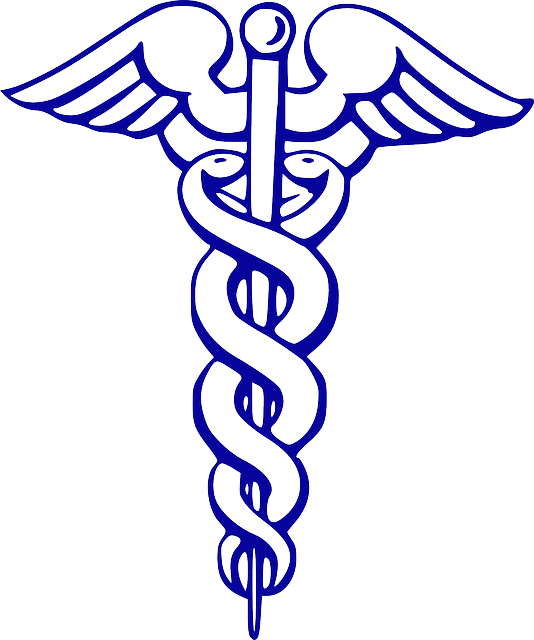Translation services for Patient Medical Records UK play a pivotal role in ensuring accurate transfer and interpretation of medical records while maintaining patient safety and adhering to GDPR standards. These services are essential for overcoming language barriers, facilitating clear communication among patients, healthcare providers, and institutions, and handling sensitive health information with precision and confidentiality. The integration of secure data transfer methods, encryption, pseudonymization, or anonymization techniques, and regular training on GDPR compliance are critical components in this process. In the UK, healthcare providers must engage with translation services that are well-versed in medical terminology, GDPR regulations, and culturally sensitive to accurately convey patient records across languages. The successful implementation of secure cloud-based platforms and collaboration between multilingual teams exemplify best practices for GDPR-compliant translation practices within the NHS, while private healthcare providers have also demonstrated their commitment to patient privacy by partnering with specialized translation services to translate medical records into multiple languages, ensuring that non-English speaking patients receive the same standard of care as their English-speaking counterparts.
Navigating the complexities of healthcare, particularly when languages converge, is a pivotal task that requires stringent adherence to data protection regulations. In the United Kingdom, ensuring GDPR compliance in translation services for Patient Medical Records is not just a legal imperative but a critical aspect of patient care and privacy. This article delves into the intricacies of maintaining patient confidentiality across linguistic boundaries, emphasizing the pivotal roles of data controllers and processors within cross-border healthcare documentation. It outlines the identification of sensitive data within medical records with a GDPR perspective, guides on selecting translation services that prioritize patient privacy and data security, and elucidates the essential steps for GDPR compliant translation workflows in the UK’s healthcare sector. Through case studies highlighting successful projects, this piece serves as an authoritative resource for understanding how to effectively manage translated patient records while upholding the highest standards of data protection and accuracy in medical translations.
- Understanding GDPR Compliance in Translation Services for Patient Medical Records UK
- The Role of Data Controllers and Processors in Cross-Border Healthcare Documentation
- Identifying Sensitive Data within Patient Medical Records: A GDPR Perspective
- Choosing the Right Translation Services: Ensuring Patient Privacy and Data Security
- Key Steps for GDPR Compliant Translation Workflows in the UK's Healthcare Sector
- Navigating Language Barriers: The Importance of Accurate Medical Record Translations
- Case Studies: Successful GDPR-Compliant Translation Projects for Patient Medical Records in the UK
Understanding GDPR Compliance in Translation Services for Patient Medical Records UK

The Role of Data Controllers and Processors in Cross-Border Healthcare Documentation

In the context of cross-border healthcare documentation, the compliance with the General Data Protection Regulation (GDPR) is paramount for organisations handling patient medical records, particularly within the UK. Translation services for Patient Medical Records UK must navigate the complexities of data protection laws across different jurisdictions. Data Controllers play a pivotal role in this landscape by determining the purposes and means of processing personal data. They are responsible for ensuring that the translation of patient records adheres to GDPR standards, which includes implementing appropriate technical and organisational measures to protect data during translation. These measures safeguard against unauthorised access or transfer across borders.
Data Processors, on the other hand, are tasked with processing the data on behalf of the Controllers. They must comply with the Controller’s instructions and maintain the confidentiality and security of the records. In the UK, where healthcare documentation often involves cross-border transfers due to the mobility of patients and the availability of specialist services abroad, both Controllers and Processors must be vigilant about GDPR compliance. The transfer of patient medical records across borders necessitates a clear understanding of data protection principles, data subject rights, and legal mechanisms that facilitate lawful data transfer, such as Standard Contractual Clauses (SCCs) or adherence to the EU-US Privacy Shield framework. By leveraging translation services for Patient Medical Records UK that are well-versed in GDPR requirements and international data transfer protocols, healthcare providers can ensure the integrity and confidentiality of patient information is upheld, regardless of geographical boundaries.
Identifying Sensitive Data within Patient Medical Records: A GDPR Perspective

In the context of patient medical records, identifying sensitive data is a critical aspect of ensuring GDPR compliance when translating these records for use within diverse linguistic environments, particularly in the UK. Under the GDPR framework, personal data refers to any information relating to an identified or identifiable natural person (data subject). Within medical records, this can include a wide range of data such as names, addresses, and unique health identifiers alongside more sensitive information like medical history, treatment details, and test results. The translation process must be meticulously managed to protect the confidentiality and integrity of this highly personal information. Translation services for patient medical records UK must implement robust data mapping strategies to locate and classify sensitive data accurately, ensuring that any transfer across languages maintains the privacy and security stipulated by GDPR.
Adhering to GDPR involves a deep understanding of the data types contained within patient records and the application of appropriate safeguards during translation. It is imperative for translation services in the UK to employ skilled professionals who are well-versed in both medical terminology and GDPR requirements. These experts must apply their knowledge to accurately identify and handle sensitive data, applying encryption, pseudonymisation, or anonymization techniques as necessary. By doing so, they can mitigate risks associated with unauthorized access or breaches, thereby ensuring that patient records remain compliant with the stringent standards set forth by GDPR when translated for different linguistic contexts.
Choosing the Right Translation Services: Ensuring Patient Privacy and Data Security

When handling patient medical records, particularly in the context of translating these documents for use across different regions within the UK or with international patients, it is imperative to engage with translation services that prioritise both precision and privacy. The General Data Protection Regulation (GDPR) sets stringent standards for data protection, which must be adhered to when translating sensitive patient information. A translation service specialising in medical records will not only ensure the accurate translation of the content but also uphold the confidentiality and integrity of the data throughout the process. These providers are often equipped with secure systems that comply with GDPR requirements, safeguarding personal details against unauthorised access and breaches. By selecting a service that is both experienced in the medical field and proficient in GDPR compliance, healthcare institutions and practitioners can rest assured that their patients’ privacy is maintained even as language barriers are effectively overcome. It is crucial to conduct due diligence when choosing such services; verify their GDPR compliance, their expertise with patient medical records UK, and their commitment to maintaining the highest standards of data security. This due diligence will help protect patient information and foster trust between healthcare providers, patients, and the translation service providers involved.
Key Steps for GDPR Compliant Translation Workflows in the UK's Healthcare Sector

When managing patient medical records in the UK’s healthcare sector, adherence to the General Data Protection Regulation (GDPR) is paramount. Translation services for Patient Medical Records UK must be integrated with robust workflows that guarantee compliance and protect sensitive data throughout the translation process. The first step in establishing a GDPR-compliant translation workflow involves a comprehensive risk assessment to identify potential data protection issues. This requires careful selection of translation providers who are well-versed in GDPR requirements and have stringent data security protocols in place.
Once a compliant provider is chosen, the next critical phase is the secure transfer of records. Employing encryption methods for data at rest and in transit, coupled with access controls that limit exposure to authorised personnel only, is essential. All parties involved must sign confidentiality agreements, and an audit trail should be maintained to track the flow of information. Furthermore, translators must handle data with the same diligence as original record holders, ensuring privacy and integrity are upheld. Regular training on GDPR compliance and data protection best practices for all staff members engaged in the translation process is also a key component. By prioritising these steps, healthcare providers can ensure that their translated patient medical records are not only accurate but also fully compliant with GDPR regulations within the UK’s healthcare sector.
Navigating Language Barriers: The Importance of Accurate Medical Record Translations

navigating language barriers in healthcare is a critical aspect of patient care, particularly within diverse communities where patients may not speak the dominant language. In the UK, ensuring that patient medical records are accurately translated is not just a matter of communication but also a legal requirement under the General Data Protection Regulation (GDPR). Translation services for Patient Medical Records UK play a pivotal role in this context, bridging the gap between healthcare providers and patients who require language support. The accuracy of these translations is paramount; errors could lead to misdiagnosis or incorrect treatment plans, potentially compromising patient safety. With the increasing mobility of individuals across borders, the need for reliable translation services has grown, necessitating a robust framework to guarantee that sensitive health information is handled with the utmost care and precision. Providers of these translation services must adhere to strict confidentiality protocols and have a comprehensive understanding of medical terminology, as well as the cultural nuances that might affect how medical concepts are interpreted in different languages. This ensures that patient records remain GDPR-compliant while facilitating effective cross-cultural communication within the healthcare system.
Case Studies: Successful GDPR-Compliant Translation Projects for Patient Medical Records in the UK

In the UK, the translation of patient medical records to ensure GDPR compliance has been a critical task for healthcare providers and translation services alike. A prime example of a successful GDPR-compliant translation project was undertaken by a leading NHS trust, which required the translation of patient records into various languages to cater to a diverse patient demographic. The project necessitated the adoption of advanced translation technologies that guaranteed data security and privacy, in strict adherence to the GDPR framework. The chosen translation services for Patient Medical Records UK utilized secure cloud-based platforms, where translators, bound by stringent confidentiality agreements, could access and translate records without compromising patient data integrity. These platforms facilitated real-time collaboration among multilingual teams and allowed for the monitoring of translation quality and consistency. As a result, the trust achieved seamless communication across different languages while maintaining GDPR compliance, thereby enhancing patient care and ensuring the protection of sensitive personal information.
Another case study showcases the successful implementation of GDPR-compliant translation processes by a private healthcare provider in Scotland. The provider sought to expand its services to non-English speaking patients, necessitating the translation of medical records into languages such as Polish, Urdu, and Chinese. To address this need, the provider partnered with a renowned translation service specializing in Patient Medical Records UK. This partnership leveraged secure data handling protocols and compliant translation workflows that aligned with GDPR requirements. The project’s success hinged on the meticulous coordination between healthcare professionals, legal advisors, and translation experts to ensure that every translated document was not only linguistically accurate but also reflected the nuances of medical terminology, thereby safeguarding patient privacy and information security.
In concluding, it is clear that maintaining GDPR compliance in translation services for Patient Medical Records in the UK is a multifaceted endeavor. The roles of data controllers and processors must be meticulously defined and adhered to within cross-border healthcare documentation. Identifying sensitive data and applying stringent data protection measures are critical components in this process. Selecting specialized translation services that prioritize patient privacy and data security is paramount, especially when navigating language barriers. By implementing key steps for GDPR-compliant translation workflows and drawing lessons from successful case studies, healthcare providers can ensure the integrity of patient medical records across the UK. Adherence to these practices not only upholds legal requirements but also fosters trust and confidence in the global exchange of healthcare information.



